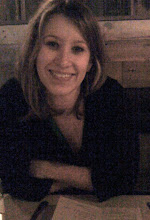

Tonight Dara and I dined on pan-roasted trout with Béarnaise sauce, accompanied by freshly shelled peas, steamed and garnished with a few fried morels. And just for fun, some baby potatoes roasted in duck fat. The finale was a lemon-scented, Basque-style custard tart topped with huge, juicy local raspberries.
You know, because it’s Monday. Kidding; actually, this was thanks to Barbara Harris from Winos & Foodies, who organized a virtual food tour of the Tour de France route and allowed me to participate by developing, preparing and chowing down on a menu inspired by Stage 16.
As the cyclists progress from region to region, various bloggers are taking turns to write about each area’s cuisine. Click here for the full story, along with links to all the participating blogs and their recipes.
I was assigned to write about the food of Pau, a city in southwest France where the cyclists are currently resting before they ascend the Pyrenees. Pau is known for its wonderful fishing rivers and the influence of its nearby mountains and Basque population. As I looked online through its restaurants’ menus, I saw a lot of salmon, trout, duck, foie gras and lamb, with several mentions of marinated peppers special to the region, sheeps milk cheeses, fresh peas, mountain berries and wild greens.
A soup called Garbure appears popular, though out of season at the moment, with cabbage, beans, potatoes and bits of bacon or goose. Pipérade is also common – a dish based on tomatoes and sweet green peppers cooked in olive oil, with potential additions such as ham, bacon, garlic, onions, other vegetables and lightly beaten egg.
Pau's first famous foodie was Henri IV, who was born there in the sixteenth century when it was part of a region called the Béarn. Contrary to what one might assume, Béarnaise sauce did not originate here; in fact, it was developed by a chef outside of Paris in 1836 in honor of the former king and his homeland.
But Henri did popularize Poule au Pot – chicken stuffed and simmered in a pot with vegetables – by saying he did not want anyone in his realm to be so poor they could not afford Poule au Pot once a week. (And here I thought U.S. President Herbert Hoover was the first to come up with that sentiment in the 1930s.)
Tonight's menu reflects the seasonal ingredients of Pau as well as Seattle and rounds out the range of recipes many other bloggers have already contributed. The Béarnaise sauce recipe is Julia Child's. The Basque-style tart recipe (minus the impromptu addition of berries) is adapted from that of a tourism board Web site, and as I was making it I didn't think it was going to work -- the dough was so sticky that it didn't roll out very well. By the time it reached the cake pan, it was full of holes and tears. I patched it up, tossed it in the oven, and lo and behold, it turned out golden brown and beautiful, with a layer of yummy vanilla custard baked inside.
As we lingered over our meal, our big Great Pyrenees dog, Chloe, hovered nearby with her glossy chocolate eyes full of hope. Though I don’t indulge any suggestion of begging, I thought for a moment of her breed’s origins as sheep-guarders in the mountains to which we were paying tribute, and how I'm happy now to know just a bit more about her roots.
PAN-ROASTED TROUT WITH BEARNAISE SAUCE
Cut off trout's head and tail. Heat the last 2 tablespoons butter in a large saute pan over medium heat. Add trout and cover for 2-3 minutes. Remove lid and flip trout. The skin should be coming off; that's OK, just scrape it away so that the fish can brown in the butter. Cook 3-4 minutes more, or just until trout is browned outside and opague inside.
Remove fish from pan and place on a cutting board in order to remove the bones and slice the fish into 4 vertical quarters. Scrape away all skin and fins. Use a boning knife to slice the fish vertically, alongside the spine, and lift away a filet of fish from the bones, keeping this quarter of the fish intact. (If the fish will not slide easily away from the bone, it is likely not cooked sufficiently, so return it to the stove and then try again.) Turn fish and repeat 3 more times, so that you are left with 4 long quarters of fish and a skeleton. Lightly salt and pepper the fish and discard the skeleton.
Place 2 filets of fish on each plate and top with warm Béarnaise sauce and the last of the minced tarragon. Serve with steamed peas or green beans and Duck Fat Potatoes.
DUCK FAT POTATOESRemove dough from refrigerator and reserve 1/3 of it. Roll out the 2/3 portion and place it in the bottom of the springform pan, patching as necessary. Pour in the cooled custard, and then roll out the remaining 1/3 dough. Place it on top of the tart, patching as necessary, and running a knife around the rim to neaten the edges. At this point, the tart will look untidy, but don't worry -- the patches won't show once it bakes. Brush the top with egg wash and bake for 45 minutes, or until golden brown. Cool on a rack, then remove from pan and transfer to a serving plate. Top with berries if desired.
Custard:





What an amazing meal for such a good cause.
ReplyDeleteLovely recipes and delicious looking photos!!
ReplyDeleteThose raspberries look enviable from here in the Adelaide Hills deep winter!
Oh Molly this all sounds so LUSCIOUS! I am definitely going to have to try the Custard Tart.
ReplyDeleteGreat post Molly. The meal sounds wonderful. I once stayed with friends in Pau and we ate trout we caught ourselves. Thanks for participating.
ReplyDelete